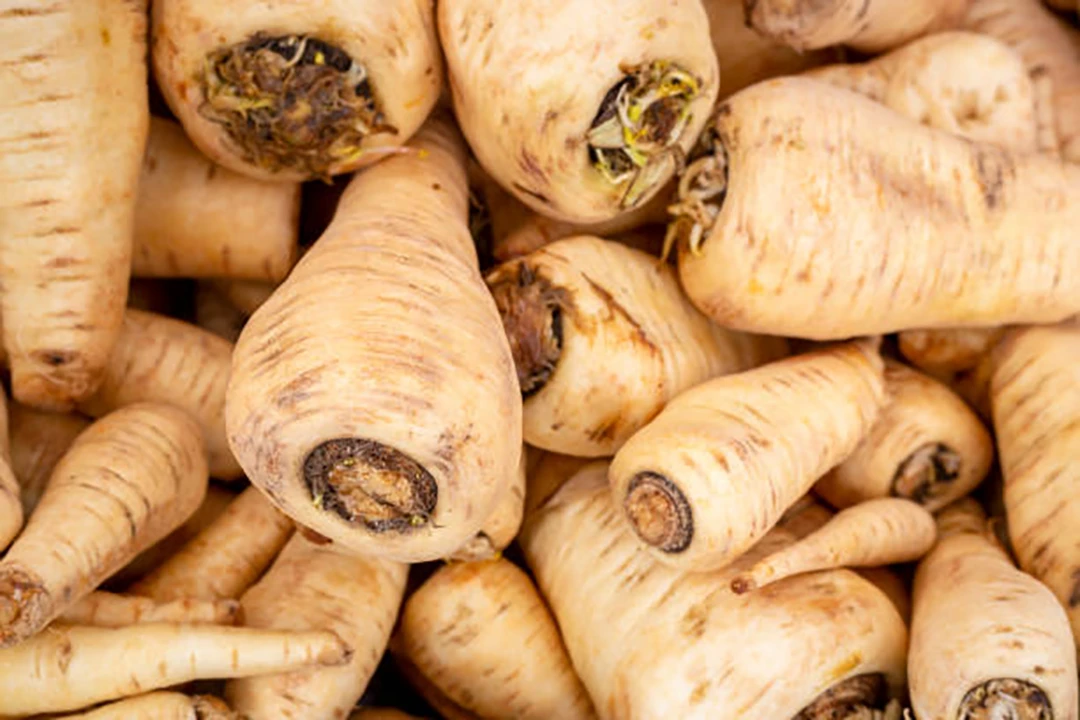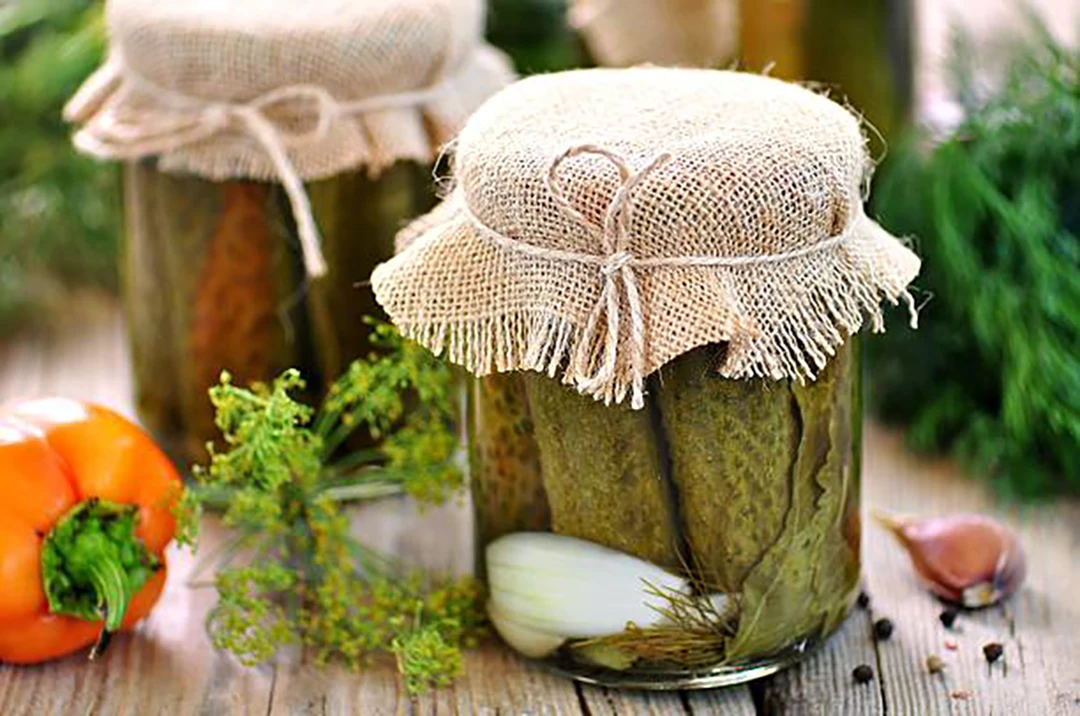- Nutrient-dense root, high starch, calcium-rich, cultivated in South America.
- Arracacha is a nutrient-rich root, reduces oxidative stress, anti-cancer, anti-inflammatory.
- Arracacha is a versatile root, enhances flavor, nutritious, used in various dishes.
 Arracacha (Arracacia xanthorrhiza), a root vegetable native to the Andes, is gaining recognition for its impressive array of health benefits backed by scientific research. Known for its rich nutritional profile, arracacha is packed with essential vitamins and minerals, including iron, vitamin B3, and vitamin C, making it a valuable addition to a healthy diet. Studies have shown that this starchy root can aid in reducing the risk of chronic ailments, support cardiovascular health, and even play a role in cancer prevention. With its high digestibility and low-calorie content, arracacha is particularly beneficial for children and the elderly, offering a nutritious and versatile food option that can be easily incorporated into various culinary dishes.
Arracacha (Arracacia xanthorrhiza), a root vegetable native to the Andes, is gaining recognition for its impressive array of health benefits backed by scientific research. Known for its rich nutritional profile, arracacha is packed with essential vitamins and minerals, including iron, vitamin B3, and vitamin C, making it a valuable addition to a healthy diet. Studies have shown that this starchy root can aid in reducing the risk of chronic ailments, support cardiovascular health, and even play a role in cancer prevention. With its high digestibility and low-calorie content, arracacha is particularly beneficial for children and the elderly, offering a nutritious and versatile food option that can be easily incorporated into various culinary dishes.
What is Arracacha ?
Arracacha is a biennial to perennial herbaceous root crop native to the Andean highlands, primarily cultivated in South American countries such as Peru, Colombia, Ecuador, Brazil, and Bolivia. It is known for its high starch content, with starches characterized by round or polygonal granules, rich in amylopectin, and possessing properties favorable for industrial applications due to their low gelatinization temperature and high paste clarity. The crop is vegetatively propagated and has a significant socio-economic impact, especially for small and medium producers, due to its high market value and low production costs. Arracacha is also valued for its nutritional content, providing highly digestible carbohydrates, vitamins, and minerals. Despite its benefits, the crop faces challenges such as susceptibility to pests and diseases, and specific photoperiod and temperature requirements that limit its cultivation outside its native range. Genetic studies have shown that cultivated arracacha has differentiated from its wild relatives, with significant genetic diversity available for breeding and conservation efforts.
Nutritional Profile of Arracacha

Arracacha, also known as Arracacia xanthorrhiza, is a nutrient-dense root vegetable native to the Andes. It is particularly rich in essential vitamins and minerals, making it a valuable addition to a balanced diet. The root is an excellent source of calcium and vitamin C and contains significant amounts of iron. Additionally, arracacha provides both soluble and insoluble fiber, which aids in digestion and promotes a healthy gut microbiome. Its nutritional profile supports various health benefits, including cardiovascular health and improved digestion.
Macronutrient Composition
Carbohydrates
Arracacha is predominantly composed of carbohydrates, which account for the majority of its caloric content. These carbohydrates are primarily in the form of slowly digestible starches, which help maintain stable blood sugar levels and provide prolonged satiety. This makes arracacha an excellent food choice for managing hunger and reducing food cravings.
Proteins
While arracacha is not a significant source of protein, it does contain small amounts of this macronutrient. Approximately 100 grams of arracacha provide around 0.505 grams of protein, which contributes to its overall nutritional value. The presence of amino acids in arracacha also supports its protein content, albeit in modest amounts.
Fats
Arracacha is very low in fats, with negligible amounts present in its composition. This low-fat content makes it a suitable option for those looking to reduce their fat intake while still obtaining essential nutrients. The minimal fat content also contributes to its low-calorie profile, making it an ideal food for weight management.
Micronutrient Content
Vitamins: A, C, B-complex
Arracacha is rich in several essential vitamins. It contains substantial amounts of vitamin C, which supports immune function and skin health. The root also provides vitamins from the B-complex group, including vitamin B3 (niacin), which is crucial for energy metabolism and maintaining healthy skin. Additionally, the yellow varieties of arracacha are a good source of carotenoids, which are precursors to vitamin A and beneficial for vision and immune health.
Minerals: Calcium, Iron, Phosphorus
The mineral content of arracacha is impressive, with high levels of calcium, iron, and phosphorus. Calcium is vital for bone health and metabolic functions, while iron is essential for the formation and transport of red blood cells, helping prevent anemia. Phosphorus plays a crucial role in energy production and bone health. These minerals collectively contribute to the overall health benefits of consuming arracacha.
Comparison with Other Root Vegetables
When compared to other root vegetables like potatoes, carrots, and cassava, arracacha stands out due to its unique nutritional profile. It contains higher levels of calcium and iron than potatoes and carrots, making it particularly beneficial for bone health and anemia prevention. Additionally, the slowly digestible starches in arracacha provide a more sustained energy release compared to the rapidly digestible starches found in potatoes. This makes arracacha a superior choice for those looking to manage blood sugar levels and maintain prolonged satiety
Science backed health benefits of Arracacha
Discover the hidden gem of the Andes: Arracacha, a root vegetable that’s been quietly revolutionizing health-conscious diets across South America. This unassuming tuber, often compared to a blend of celery, chestnuts, and carrots, packs a powerful nutritional punch backed by scientific research. From boosting digestive health to supporting cardiovascular function, arracacha offers a range of health benefits that make it a worthy addition to any balanced diet. In this article, we’ll explore the science-backed advantages of incorporating this versatile root into your meals, revealing why arracacha is quickly becoming a favorite among nutritionists and health enthusiasts alike.
1. Reduce oxidative stress
Arracacha has shown promising potential in reducing oxidative stress, according to recent studies. This Andean root vegetable contains a variety of antioxidant compounds, including phenols and carotenoids, which help neutralize harmful free radicals in the body. Arracacha extract can decrease the production of reactive oxygen species (ROS) and mitochondrial superoxide anion in cell cultures, indicating its ability to mitigate oxidative damage. Additionally, arracacha has been found to increase the production of glutathione, a powerful antioxidant that plays a crucial role in protecting cells from oxidative stress. The antioxidant properties of arracacha not only contribute to its potential health benefits but also help maintain the quality and shelf life of minimally processed arracacha products.
What research Says?
- Arracacha fights oxidative stress with special enzymes. Researchers looked at how cold storage affects these enzymes in arracacha roots. They kept the roots at 5°C and 10°C for 28 days. They then measured two enzymes, polyphenoloxidase and peroxidase, and checked the levels of phenolic compounds. The study showed that both temperatures made the roots darken inside and out, especially at 5°C. During the cold storage, the enzyme activities and phenolic compound levels went up. These enzymes are key in responding to stress and causing the darkening. This shows they help reduce oxidative stress.
- A study looked at how rosemary extract (Rosmarinus officinalis L.) helps keep arracacha cubes fresh when vacuum-packed. They tried different amounts of the extract and various times. They found that a mix with 7% rosemary extract for 20 minutes worked best. It kept the arracacha good for 5 days in the fridge at 5°C. This mix lowered oxidation, just like chemical antioxidants such as ascorbic acid and citric acid. It means the compounds in rosemary can help reduce spoilage in arracacha.
2. Have anti-cancer effects
Extracts from arracacha can induce apoptosis, a process of programmed cell death crucial for eliminating cancer cells. Specifically, research on HeLa cells, a type of cervical cancer cell, demonstrated that arracacha extracts increased the expression of caspases 3/7 and Bax, proteins that promote apoptosis, while decreasing the levels of β-actin, nitric oxide (NO•), and hypoxia-inducible factor-1 (HIF-1), which are associated with cancer progression.
What Research Says?
- Arracacha has many health-boosting substances, like antioxidants and sesquiterpenoids. A key one is xanthorrhizol. It’s a sesquiterpenoid also in Curcuma xanthorrhiza and has shown strong activity against the spread of diseases in experiments.
- The antioxidant effects of Arracacha have been looked at, especially when mixed with other natural extracts. For example, researchers tested how well rosemary extract protects Arracacha. They found that a 7% mix of rosemary extract gave good antioxidant protection while being stored. This means that the antioxidants in Arracacha, made even stronger by other natural extracts, might help fight cancer by lowering oxidative stress, which can lead to cancer.
3. Has anti-inflammatory effects

Arracacha exhibits notable anti-inflammatory effects, making it a valuable addition to a diet aimed at reducing inflammation. This root vegetable contains a variety of bioactive compounds, including flavonoids and polyphenols, which have been shown to inhibit the production of pro-inflammatory cytokines and enzymes such as COX-2 and iNOS. Traditional uses of arracacha in aboriginal medicine include applying cooked and crushed roots as an anti-inflammatory poultice, highlighting its historical significance in treating inflammation. By incorporating arracacha into your diet, you may benefit from its natural anti-inflammatory properties, potentially alleviating symptoms of chronic inflammatory conditions and promoting overall health.
What Research Says?
- Study shows that substances from Arracacha and similar plants can block inflammatory cytokines. These are important in causing inflammation. For example, research on a plant closely related to Arracacha, called Arracacia tolucensis, found that certain extracts greatly lowered blood sugar and blocked inflammatory cytokines in diabetic rats. This hints that Arracacia xanthorrhiza may work against inflammation in the same way.
- Arracacha has anti-inflammatory qualities and also acts as an antioxidant. This can boost its health benefits. A study looked at how rosemary extract affects Arracacha. It found that using rosemary extract with Arracacha greatly lowered oxidation when stored. Antioxidants in Arracacha can help fight oxidative stress, which is linked to long-term inflammation.
How to Incorporate Arracacha into Your Diet
Arracacha is a versatile root vegetable that can be easily incorporated into various dishes to enhance both flavor and nutritional value. Its unique taste, reminiscent of a blend between celery, chestnuts, and carrots, makes it a delightful addition to many recipes.
Culinary Uses and Popular Recipes
Arracacha is a staple in South American cuisine and can be used in a variety of culinary applications. Popular recipes include arracacha gnocchi with sage butter, arracacha and sausage shepherd’s pie, and creamy arracacha soups. Its naturally sweet and nutty flavor pairs well with both savory and sweet dishes, making it a versatile ingredient in the kitchen. Whether roasted, boiled, or mashed, arracacha adds a unique twist to traditional recipes.
Soups, Stews, Purees
One of the most common ways to enjoy arracacha is in soups, stews, and purees. Its creamy texture when cooked makes it an excellent base for hearty soups like the Colombian “sopa de arracacha” or the Brazilian “sopa de mandioquinha.” Arracacha can also be pureed and combined with other root vegetables like yuca for a rich and comforting side dish. These preparations not only highlight the vegetable’s natural flavors but also provide a nutritious and satisfying meal option.
Snack Options and Side Dishes
Arracacha can be transformed into delicious snacks and side dishes. For a healthy snack, try making arracacha fries or chips by slicing the root thinly and baking or frying until crispy. It can also be used in side dishes like roasted arracacha, where the root is tossed with olive oil and herbs and then baked until golden brown. These simple preparations make arracacha a delightful and nutritious alternative to more common root vegetables like potatoes.
Tips for Buying and Storing Arracacha

When buying arracacha, look for firm, unblemished roots. Due to its short shelf life, it’s important to store arracacha properly to extend its usability. Wrap the roots in cling film to retain moisture and store them in the refrigerator at temperatures between 3°C and 12°C (37°F to 54°F). Properly stored, arracacha can last for up to two weeks. Avoid leaving it at room temperature for extended periods, as it can quickly develop brown spots and deteriorate.
Preparation Methods to Retain Maximum Nutrients
To retain the maximum nutrients in arracacha, it’s best to cook it using methods that preserve its vitamin and mineral content. Steaming or boiling arracacha with the skin on can help retain its nutrients, particularly vitamin C and carotenoids. If peeling is necessary, do so just before cooking to minimize nutrient loss. Additionally, incorporating arracacha into dishes with minimal processing, such as soups and purees, helps maintain its nutritional integrity while enhancing the overall flavor and health benefits of the meal.
Conclusion
Arracacha is a nutrient-dense root vegetable native to the Andes that offers a range of health benefits backed by scientific research. It contains antioxidants that can reduce oxidative stress and fight cancer, anti-inflammatory compounds that alleviate symptoms of chronic inflammatory conditions, and a unique nutritional profile rich in vitamins, minerals, and slowly digestible starches that support cardiovascular health, bone health, and digestive function. Arracacha can be easily incorporated into various dishes to enhance both flavor and nutritional value, making it a versatile and valuable addition to a balanced diet.
ADDITIONAL RESOURCES
Here are some key US organizations involved in vegetable research, along with their descriptions and URLs:
1. USDA Economic Research Service (ERS)
The USDA ERS provides comprehensive analyses on the supply, demand, prices, and trade of fresh-market and processed vegetables, potatoes, and pulses. Their reports, such as the “Vegetables and Pulses Outlook,” offer valuable insights into the vegetable market and trends.
2. Bayer Vegetable Seeds Research & Development
Bayer’s Vegetable Seeds R&D site in Woodland, California, focuses on developing new vegetable varieties and sustainable agricultural practices. They work closely with growers to innovate and address challenges in vegetable production, ensuring high-quality and nutritious vegetables.
3. International Fresh Produce Association (IFPA)
IFPA is a trade association representing companies from every segment of the global fresh produce and floral supply chain. They engage in promoting fresh produce consumption and supporting research and development efforts to enhance vegetable production and quality.
Recommendations for books on Arracacha.
Here are some recommendations for books on the research of Arracacha:
1. “Tropical Root and Tuber Crops: Cassava, Sweet Potato, Yams, and Aroids“ by Vincent Lebot
This book covers various tropical root and tuber crops, including Arracacha, discussing their biology, genetics, and agricultural practices.
2. “Root and Tuber Crops (Handbook of Plant Breeding)“ edited by J.E. Bradshaw
This comprehensive handbook includes a section on Arracacha, exploring its breeding, genetics, and agronomic aspects.
3. “Handbook of Vegetables and Vegetable Processing“ edited by Nirmal Sinha, Y. H. Hui, E. Özgül Evranuz, and others
The book provides information on various vegetables, including Arracacha, covering aspects like processing, storage, and nutritional value.
FAQS
- What are the main nutritional benefits of arracacha?
Arracacha is rich in calcium, vitamin C, iron, vitamin B3 (niacin), magnesium, phosphorus, and dietary fiber. It’s also a good source of complex carbohydrates and contains antioxidants like carotenoids. - How does arracacha support digestive health?
Arracacha is high in dietary fiber, which promotes healthy digestion and gut health. Its soluble fiber content can help reduce cholesterol levels and support heart health. - Can arracacha help with weight management?
Yes, arracacha has a low glycemic index, making it ideal for weight loss diets. Its high fiber content helps you feel fuller for longer periods, potentially reducing overall calorie intake. - What are the benefits of arracacha for skin health?
Arracacha contains antioxidants and vitamin C, which can help protect skin cells from damage caused by free radicals. This may contribute to healthier, younger-looking skin. - How does arracacha support immune function?
The high vitamin C content in arracacha helps boost the immune system by increasing the production of white blood cells, which are essential for fighting off infections and diseases. - Is arracacha beneficial for cardiovascular health?
Yes, arracacha contains potassium, which helps regulate blood pressure. Its fiber content can also help lower cholesterol levels, supporting overall heart health. - Can arracacha help with anemia prevention?
Arracacha is a good source of iron, which is essential for preventing anemia and maintaining healthy blood cells. - How does arracacha contribute to bone health?
Arracacha is rich in calcium, containing four times as much as potatoes. This makes it beneficial for maintaining strong bones and teeth. - Is arracacha suitable for people with diabetes?
Due to its low glycemic index and high fiber content, arracacha can help regulate blood sugar levels, making it a potentially good option for people with diabetes. - Does arracacha have any benefits for pregnant women?
Arracacha is rich in folate and iron, which are essential nutrients during pregnancy. It may help prevent iron deficiency anemia and support fetal development.


